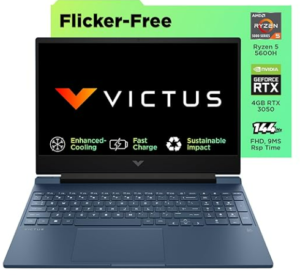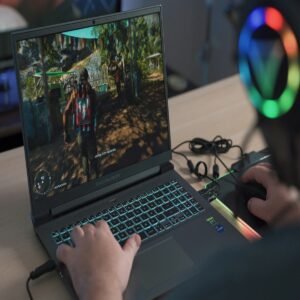Buying a laptop can be a significant investment, and selecting the right one is crucial for your personal or professional needs. With countless models available, choosing the ideal laptop can seem overwhelming. Whether you’re a student, professional, gamer, or just looking for a personal laptop, it’s important to consider key features to make sure you get the best value. Here are the most important factors to consider before buying a laptop.
1. Define Your Purpose and Usage
The first step in choosing a laptop is determining what you’ll be using it for. Your usage will dictate the specifications and features you need.
- Basic Use: If you only need a laptop for web browsing, checking email, word processing, and media consumption, a budget laptop with an Intel Core i3 or AMD Ryzen 3 processor, 4-8GB of RAM, and an SSD should suffice.
- Productivity/Work: For office tasks like spreadsheets, presentations, or video conferencing, aim for a laptop with an Intel Core i5 or i7 processor, 8GB or more of RAM, and fast storage (SSD).
- Gaming: High-end laptops with dedicated graphics cards (NVIDIA GTX/RTX or AMD Radeon), faster processors (Intel Core i7/i9 or Ryzen 7/9), and higher refresh rate screens (120Hz+) are needed for smooth gameplay.
- Creative Work (Design, Video Editing): A laptop with powerful processors, high RAM (16GB or more), dedicated graphics, and a color-accurate display (IPS or OLED) is essential for tasks like photo editing, video production, and graphic design.
2. Set a Budget
Laptops come in a wide price range, and setting a budget helps narrow down your options. Your budget will influence your choice in terms of performance, build quality, and features.
- Entry-Level (Rs.15000–Rs. 30000): These laptops are ideal for basic tasks like browsing, word processing, and watching videos. Expect modest processors, limited RAM, and basic displays.
- Mid-Range (Rs.31000–Rs. 60000): Offers a balance of performance and features for everyday tasks, light gaming, or productivity work. These laptops often come with better processors (Intel Core i5 or AMD Ryzen 5), higher RAM, and SSD storage.
- High-End (Rs.61000–Rs.120000): These laptops are designed for demanding tasks like gaming, video editing, and professional design work. Expect top-tier processors (Intel Core i7/i9, AMD Ryzen 7/9), dedicated graphics cards, and premium displays.
3. Choose the Right Processor (CPU)
The processor is the brain of your laptop and significantly impacts performance.
- Intel Core i3/i5/i7/i9:
- i3 is for light tasks (web browsing, email).
- i5 offers good performance for most users (office tasks, light gaming).
- i7 is great for multitasking, creative work, and gaming.
- i9 is best for heavy-duty tasks like 4K video editing and gaming at high settings.
- AMD Ryzen 3/5/7/9: Ryzen processors are known for excellent performance and value for money. The Ryzen 5 and Ryzen 7 are comparable to Intel’s i5 and i7, respectively.
- Apple M1/M2 (for MacBooks): Apple’s custom-designed chips are known for their energy efficiency, excellent performance, and integration with macOS. These are ideal for users in the Apple ecosystem or for those needing strong performance for creative work.
4. Consider Memory (RAM)
RAM is crucial for multitasking and overall performance. The more RAM you have, the better your laptop will handle multiple applications running at once.
- 4GB: Suitable for basic tasks (browsing, word processing).
- 8GB: Ideal for everyday multitasking (email, web browsing, office work).
- 16GB: Recommended for more demanding tasks (video editing, programming, heavy multitasking).
- 32GB or more: Needed for professional creative work, video production, or intensive gaming.
5. Storage Type: SSD vs. HDD
The storage type plays a significant role in your laptop’s speed, especially in boot time and file access.
- SSD (Solid-State Drive): SSDs are much faster than HDDs, leading to quicker boot times, faster application loading, and better overall responsiveness. Look for at least a 256GB SSD.
- HDD (Hard Disk Drive): HDDs are slower and bulkier but offer more storage space for the price. Suitable for users who need large storage but don’t mind slower speeds.
- Hybrid Storage: Some laptops combine an SSD (for speed) and an HDD (for capacity), which can be a great option if you need both speed and large storage.
6. Display Size and Quality
The display is one of the most important aspects of the laptop, especially if you plan to spend a lot of time on it. Here are some things to consider:
- Screen Size:
- 13–14 inches: Compact and lightweight, ideal for portability.
- 15 inches: The most common size, providing a good balance of screen space and portability.
- 17 inches: Large displays, great for those who use their laptops as desktop replacements (ideal for gaming, creative work).
- Resolution:
- Full HD (1920 x 1080): Standard resolution, great for most tasks.
- 4K (3840 x 2160): Ideal for content creators, gamers, or those who require very high screen detail.
- Panel Type:
- IPS (In-Plane Switching): Provides better color accuracy and wider viewing angles.
- OLED: Offers deep blacks and high contrast, perfect for media consumption or creative work.
- Refresh Rate: For gamers, a higher refresh rate (120Hz or above) is essential for smooth gameplay.
7. Graphics (GPU)
Graphics processing power is crucial if you’re into gaming, video editing, or other GPU-intensive tasks.
- Integrated Graphics: Most laptops come with integrated graphics (Intel UHD, Intel Iris, AMD Vega), which are fine for everyday tasks and light gaming.
- Dedicated Graphics: For more demanding applications like gaming, video editing, or 3D rendering, look for laptops with a dedicated GPU (NVIDIA GTX, RTX, or AMD Radeon).
8. Battery Life Battery life is essential for users who need a portable laptop that can last all day without being plugged in.
- 8+ hours: Ideal for most users. You’ll be able to get through a full workday or long trip without needing to charge.
- 10-20 hours: High-end ultrabooks (like MacBooks or premium Windows laptops) offer long-lasting battery life for all-day productivity.
Keep in mind that actual battery life can vary based on usage, so it’s a good idea to check reviews for real-world battery performance.
9. Build Quality and Design
The build quality affects how durable and portable your laptop is.
- Material: Aluminum bodies are more durable and premium than plastic.
- Weight: If you’re traveling often, go for a lighter model (typically 2-3 pounds).
- Keyboard: If you type a lot, make sure the keyboard is comfortable, with good key travel and a backlight for low-light conditions.
- Ports: Ensure the laptop has the necessary ports you need, such as USB Type-A, USB-C, HDMI, and an SD card reader.
10. Operating System
The operating system (OS) you choose depends on your preferences and the software you need.
- Windows: Most versatile and widely used OS, compatible with a broad range of software.
- macOS (for Apple laptops): Known for its user-friendly interface, security, and seamless integration with other Apple devices. Ideal for creative professionals.
- Chrome OS (for Chromebooks): A lightweight, cloud-based OS suitable for basic tasks like web browsing, email, and document editing.
- Linux: For developers or users who prefer open-source software.
11. Connectivity and Ports
Make sure your laptop has the necessary connectivity options for your needs.
- USB Type-A and Type-C: Ensure a mix of both for fast data transfer and charging.
- HDMI: If you need to connect your laptop to an external monitor or projector.
- Wi-Fi 6 and Bluetooth 5.0: These provide faster, more reliable wireless connections.
- SD Card Slot: Useful for photographers or video editors who frequently transfer large files.
12. Warranty and Support
Check the warranty and support options offered by the manufacturer. A 1-year warranty is typical, but extended warranties may be available, offering peace of mind for hardware issues.
- Customer Support: Look for brands with good customer service and easy access to support (e.g., HP, Dell, Apple, Lenovo).
- Accidental Damage Protection: Some manufacturers offer protection plans against drops, spills, or other accidents.



